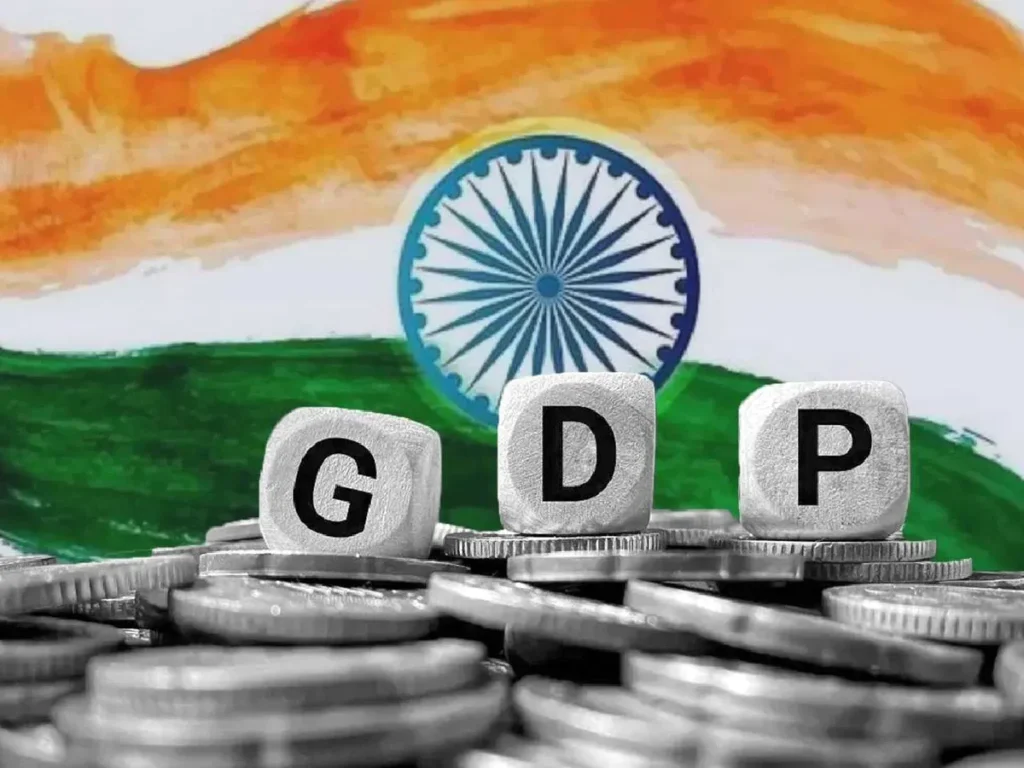India’s GDP numbers tell a tale

Lucknow: India’s Gross Domestic Product (GDP) has been a focal point of economic discussions both domestically and internationally, especially as it plays a crucial role in assessing the country’s economic health and global standing. Let’s break down the key aspects of India’s GDP, supported by numbers and facts.
Overview of India’s GDP Growth
- Current GDP Size:
- As of 2023, India’s nominal GDP stands at approximately $3.75 trillion, making it the world’s fifth-largest economy. This reflects a significant growth trajectory, especially when compared to its GDP of around $2 trillion in 2014.
- Growth Rate:
- India has experienced varied GDP growth rates over the last decade. The country saw an average growth rate of 7% between 2014 and 2019. However, the COVID-19 pandemic led to a contraction of around 7.3% in FY2020-21. The economy rebounded with a growth rate of 8.7% in FY2021-22 and stabilized at around 6.3% in FY2022-23.
- Global Ranking:
- In terms of Purchasing Power Parity (PPP), India’s GDP is approximately $11.5 trillion, placing it as the third-largest economy globally, behind only the United States and China.
Sectoral Contributions to GDP
- Agriculture:
- The agriculture sector contributes about 18% to India’s GDP. Despite a declining share in the overall GDP over the years, agriculture remains a crucial part of the economy, employing nearly 42% of the workforce.
- Key crops like rice, wheat, and sugarcane are significant contributors, with India being the second-largest producer of rice globally.
- Industry:
- The industrial sector contributes approximately 29% to the GDP. Manufacturing, construction, mining, and utilities are the key components.
- The “Make in India” initiative launched in 2014 aimed to increase the share of manufacturing in GDP to 25% by 2022. However, it currently stands at around 17%.
- Services:
- The services sector is the largest contributor to GDP, accounting for about 53%. Key areas include IT and software services, financial services, trade, and hospitality.
- India’s IT industry alone contributes over 8% to the GDP, making the country a global IT hub.
Investment and Consumption
- Gross Fixed Capital Formation (GFCF):
- GFCF, which represents investment in infrastructure, machinery, and equipment, is about 29% of the GDP. This is a critical indicator of future economic growth and productivity.
- Private Consumption:
- Private consumption constitutes nearly 60% of India’s GDP. This highlights the significance of domestic demand in driving the economy. Rising incomes and urbanization have fueled consumption in sectors like automobiles, electronics, and consumer goods.
- Government Expenditure:
- Government spending accounts for about 13% of GDP. Public investment in infrastructure, health, and education has been a key driver of economic activity, especially during downturns.
Trade and External Sector
- Exports:
- India’s exports of goods and services account for about 19% of GDP. Key export sectors include IT services, pharmaceuticals, textiles, and petroleum products.
- In FY2022-23, India’s merchandise exports were valued at approximately $447 billion, while services exports were around $322 billion.
- Imports:
- Imports account for about 23% of GDP, leading to a trade deficit. India is heavily reliant on imports for crude oil, machinery, electronics, and gold. In FY2022-23, total imports were valued at approximately $725 billion.
- Foreign Direct Investment (FDI):
- India has attracted significant FDI inflows, which stood at $84 billion in FY2022-23. The services sector, particularly IT, telecom, and financial services, attracts the majority of FDI.
Inflation and Fiscal Deficit
- Inflation:
- India’s inflation rate has been relatively high in recent years, with consumer price inflation averaging around 6% in 2022. Factors like food prices, fuel costs, and global supply chain disruptions have contributed to inflationary pressures.
- Fiscal Deficit:
- India’s fiscal deficit stood at 6.4% of GDP in FY2022-23. This is higher than the pre-pandemic levels but has improved from the 9.5% recorded during the peak of the COVID-19 crisis. The government aims to reduce the fiscal deficit to below 4.5% by FY2025-26.
Challenges and Opportunities
- Demographic Dividend:
- India’s large and young population presents a significant opportunity. With over 65% of the population under the age of 35, harnessing this demographic dividend could boost economic growth. However, this requires substantial investment in education, skills development, and job creation.
- Infrastructure:
- Despite improvements, infrastructure remains a bottleneck for growth. The National Infrastructure Pipeline (NIP), which aims to invest $1.4 trillion by 2025, is a step towards addressing this gap.
- Digital Economy:
- India’s digital economy is growing rapidly, with projections to reach $1 trillion by 2025. The rapid adoption of digital payments, e-commerce, and digital services is transforming the economic landscape.
- Climate Change:
- Climate change poses a significant risk to India’s GDP. Extreme weather events, water scarcity, and dependence on monsoon rains can affect agriculture and overall economic stability.
Summing it up
India’s GDP is on a steady growth trajectory, supported by strong domestic consumption, a vibrant services sector, and robust investment inflows. However, challenges such as high inflation, fiscal deficits, infrastructure bottlenecks, and climate risks need to be addressed to sustain this growth. Leveraging the demographic dividend, enhancing infrastructure, and fostering a resilient digital economy will be crucial in ensuring India’s continued economic ascent.

This comprehensive overview, anchored in numbers and facts, illustrates the strengths and challenges of India’s economic landscape.








